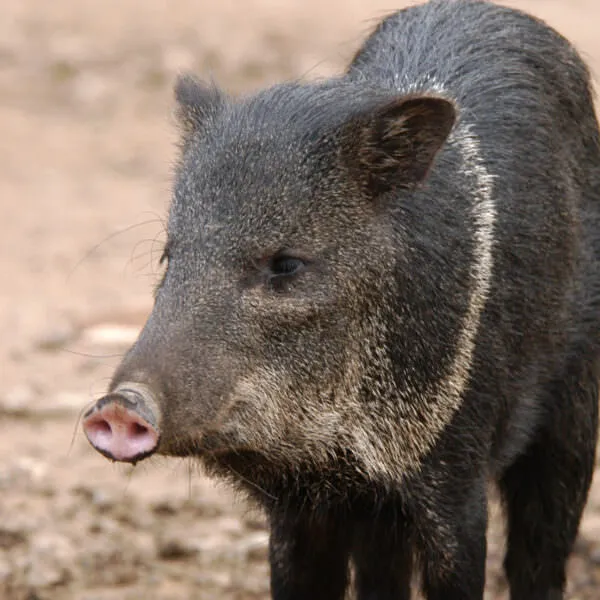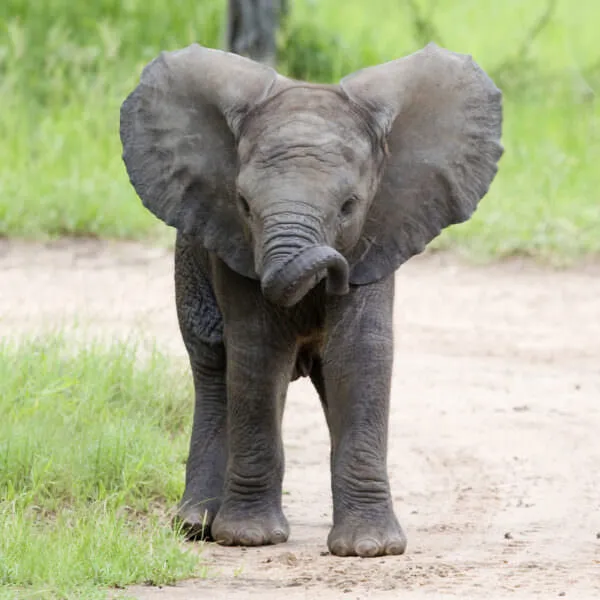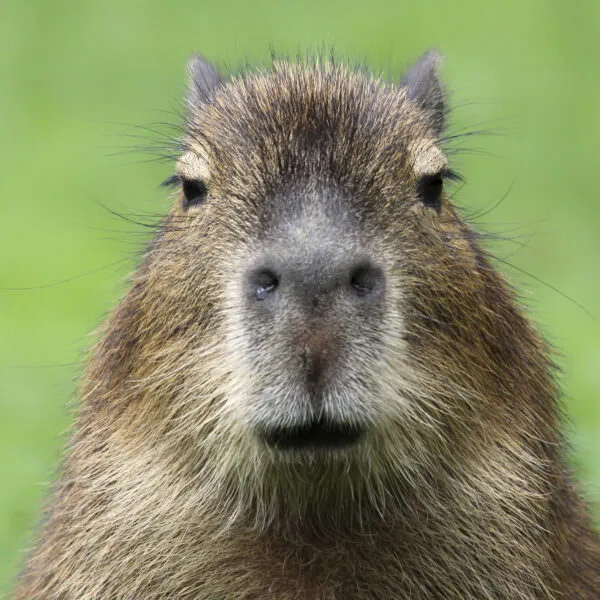Anatomy
The okapi is a beautiful and elusive animal, unknown to western scientists until 1900! Standing five feet (1.5 m) tall, its legs and hindquarters are covered in black and white stripes, similar to a zebra. Its closest living relative, however, is the giraffe. Like its giraffe cousin, the okapi has a long, dark, prehensile tongue that allows it to easily strip buds and leaves off branches, excellent hearing and a similarly shaped triangular head. The okapi’s body is covered in dark reddish brown fur that is thick and velvety but very oily, helping to keep the animal dry on rainy days. Although it generally travels alone, scent glands on the bottom of its feet allow it to keep track of its okapi neighbors and mark its territory.
We're All In
Together, we're building a future where people and nature thrive. Sign up today and join our movement...
Habitat
Native to the Democratic Republic of Congo, okapis are mainly found within the Ituri Forest and prefer very dense tropical rainforests. While they usually remain in the thick vegetation, they also frequent nearby riverbeds. In the filtered sunlight of the rainforest understory, their bold stripes act as great camouflage.
Diet
Strictly herbivores, okapis’ diets consist of leaves, buds, twigs, fruits and other understory vegetation. As browsers, they consume between 45 and 60 lbs (20 and 27 kg) of vegetation each day. Like their giraffe cousins, okapis are ruminants—animals with four chambered stomachs that allow the digestion of very tough plant matter. Okapis are also known to occasionally eat the clay found by riverbeds in order to meet their mineral and salt requirements.
Threats
Deforestation, along with the changing political climate in central Africa, has led to a loss of habitat for the okapi population. They are also a target for poachers because of their unique pelts and meat. Due to their reclusive nature, most of the behavioral information known to scientists has been gathered in captivity. Scientists believe they are still well distributed throughout their range, with approximately 25,000 individuals left in the wild, and they are currently not considered threatened.
Did You Know
Okapi newborns stand within the first 30 minutes after birth, and will nurse within the first hour. Despite their ability to walk, mothers hide newborns in dense vegetation and return frequently to allow the calves to nurse. Newborn calves do not defecate until they are between four and eight weeks old. This adaptation helps to keep them hidden from their predator’s keen sense of smell while they are still small and weak.



